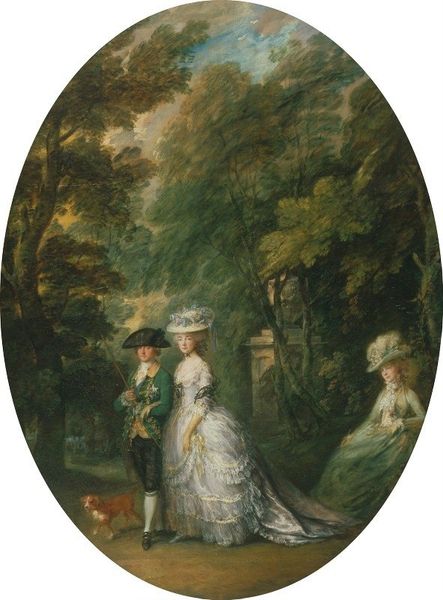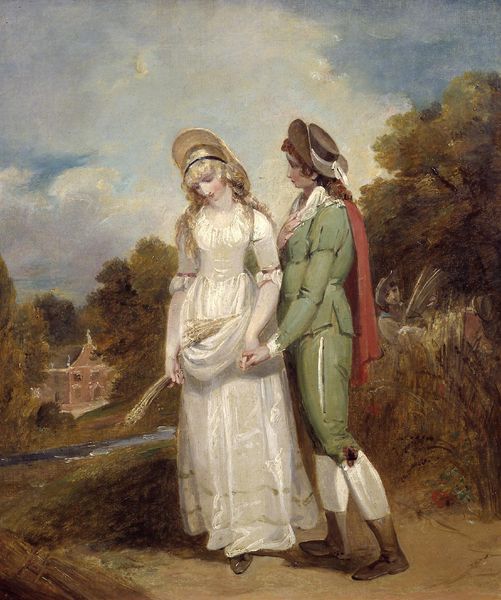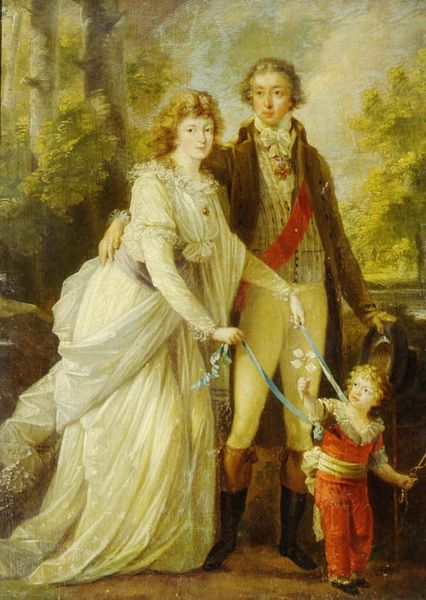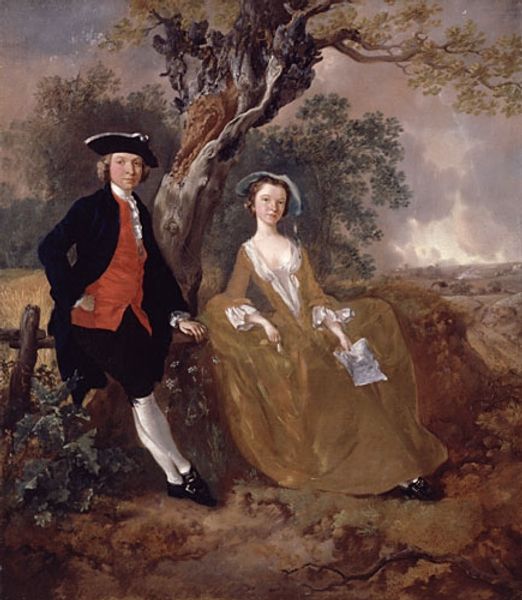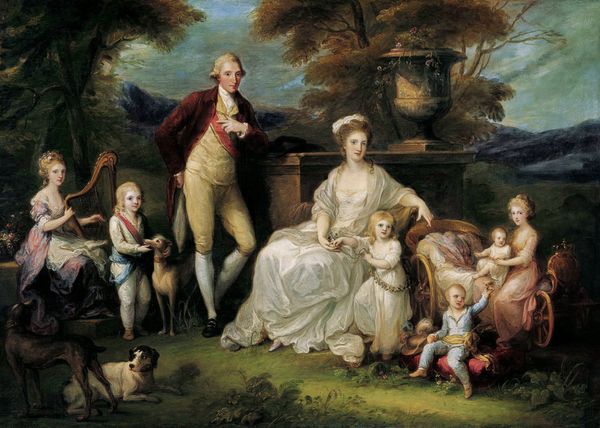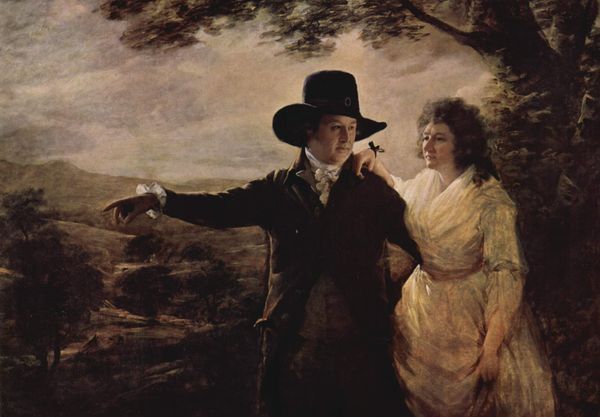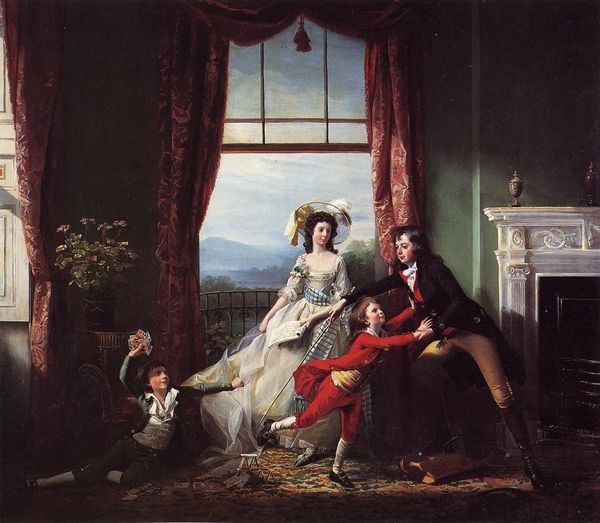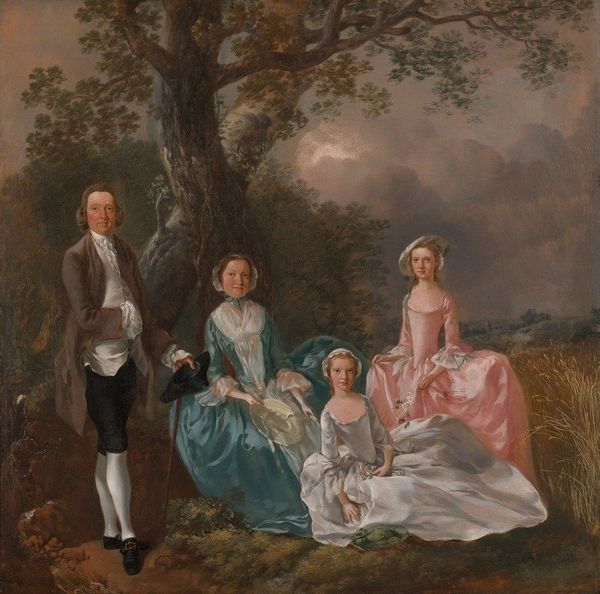
Mr. and Mrs. William Hallett (The Morning Walk) 1785
0:00
0:00
Dimensions: 179.1 x 236.2 cm
Copyright: Public domain
Curator: Gainsborough’s “Mr. and Mrs. William Hallett,” sometimes known as "The Morning Walk," painted in 1785, captures a fashionable couple taking a stroll. The artwork is currently held in London’s National Gallery. What's your first take on this portrait? Editor: Ethereal. It's striking how the figures seem to float against the soft backdrop. It's Romantic, not just in style but in the yearning captured by the pose and colors. Curator: Indeed. The feathery brushstrokes that define everything from their hair to the surrounding foliage contribute to this dreamlike state. Notice how Gainsborough blurred the lines between portraiture and landscape, reflecting an evolving view of nature’s place in art. The Hallets appear amidst a Romantic idealization. Editor: Right. There’s a theatrical element as well. Their fashionable clothing acts as symbols of their status in the late 18th-century. He’s posed with such restrained confidence; her elaborate hat and dress suggest a life of leisure and cultivated taste. It reminds us how closely image was associated with power during the era of revolution in France, not too far from where Gainsborough sits, portraying them. Curator: It is fascinating that you read in that way because of how social status manifests. You may also recognize some enduring visual motifs of aristocratic display— the carefully cultivated garden backdrop, which has to do with idealized states. Then, the little dog: representing faithfulness but also wealth, as it is an exotic breed. These aspects signal their standing and the values they wished to project. Editor: I also think of the symbolism within. The walk itself: is it a symbol of their journey through life together, framed by the changing political environment? And does the almost-overwhelming landscape perhaps indicate forces too vast for them to comprehend or control? The composition also draws my eyes upward to their faces; how much of their 'real' emotions do you find represented in the Hallett’s gaze? Curator: An interesting point. Gainsborough wasn't known for precise emotional conveyance, so maybe we find an archetype here instead, or a presentation of a particular type of social and romantic union that emphasizes certain expectations of duty or gentility rather than raw passion. I would then offer that, in this, Gainsborough speaks through something closer to symbols. Editor: Fascinating; it causes me to see that it is both a portrait of people and an allegory about a specific historical and political environment. A reminder that what they presented, they meant for their world to admire and interpret in certain ways.
Comments
No comments
Be the first to comment and join the conversation on the ultimate creative platform.

